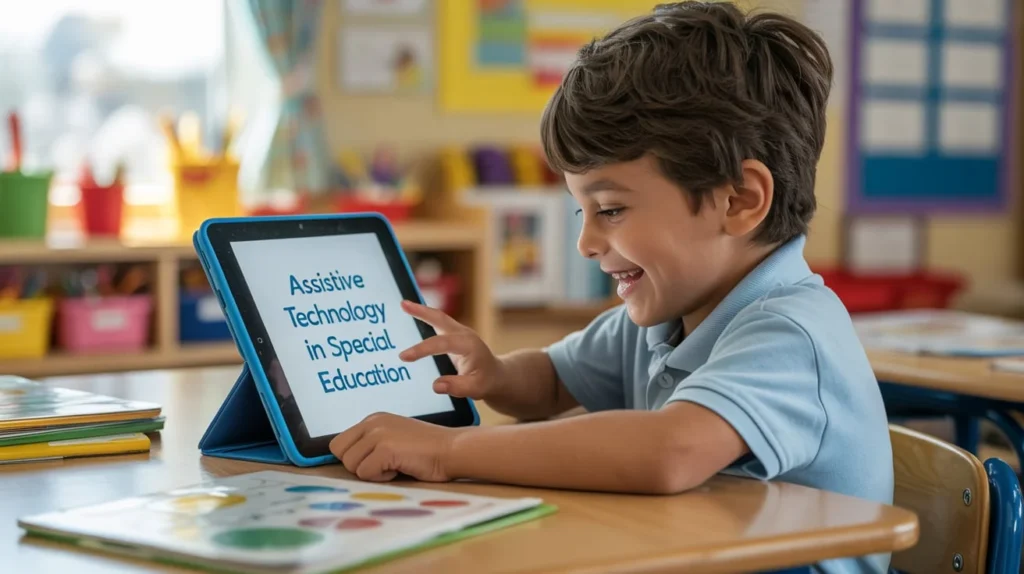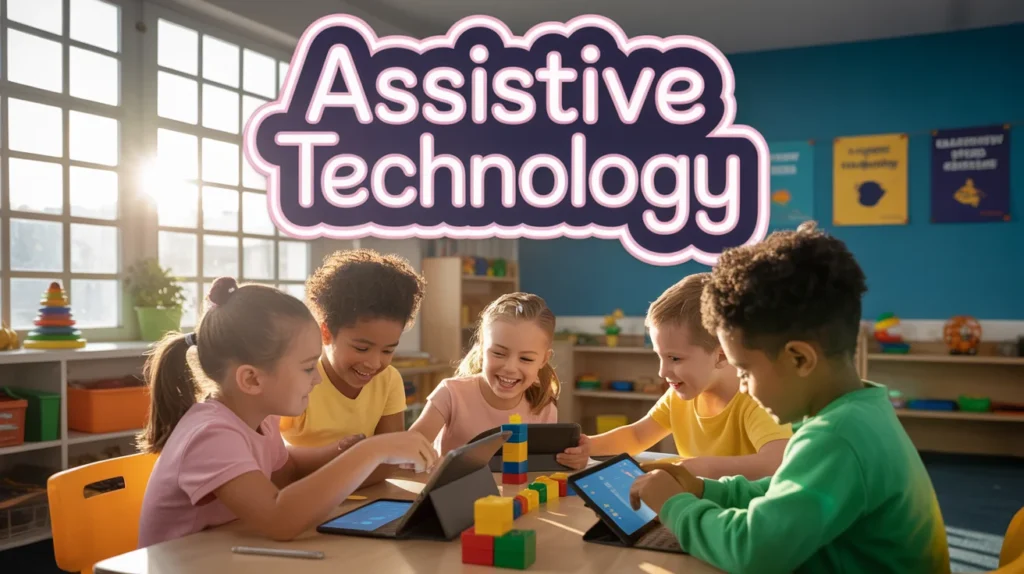Assistive technology plays a crucial role in special education. It helps students with disabilities learn, communicate, and participate fully in the classroom. Understanding what assistive technology is in special education is essential for teachers, parents, and students to provide better support.
Assistive technology includes tools, devices, and software that help overcome learning challenges. These tools empower students to develop independence and achieve academic success. Using technology in education is not just a support system it’s a pathway to inclusion and equality.
With advancements in technology, special education has transformed. Students with hearing, vision, mobility, or cognitive disabilities can now access learning materials in ways that were not possible before. Recognizing what assistive technology is in special education helps educators choose the right tools for each child.
Types of Assistive Technology in Special Education
Assistive technology in special education comes in different forms to meet the diverse needs of students. It includes both simple and advanced tools that help students learn, communicate, and participate in classroom activities. Choosing the right type depends on the student’s individual challenges, such as difficulties with reading, writing, communication, or mobility.
Low-Tech Devices
Low-tech devices are simple, non-electronic tools that assist students in performing daily tasks more effectively. These devices are easy to use, affordable, and do not require extensive training. Examples include pencil grips to improve handwriting, magnifying glasses for better reading, and picture schedules to help students follow routines. Despite their simplicity, low-tech devices can make a significant difference in learning outcomes and independence.
High-Tech Devices
High-tech devices use electronic technology to support students with complex learning needs. These tools can adapt to individual challenges and provide advanced features that improve communication and academic performance. Examples include speech-to-text software for students who struggle with writing, screen readers for visually impaired learners, and AAC (Augmentative and Alternative Communication) devices that help non-verbal students communicate. High-tech devices often require training but offer substantial benefits.
Adaptive Software
Adaptive software is specialized computer or tablet programs designed to help students learn at their own pace. These programs often adjust difficulty levels based on the user’s performance, providing a personalized learning experience. Examples include reading programs with audio support for students with dyslexia, math apps with visual aids for learners who struggle with numbers, and cognitive training games that enhance memory and problem-solving skills. Adaptive software fosters independence and engagement in learning.
Communication Aids
Communication aids are tools that help students express themselves, understand others, and participate in classroom discussions. These aids are essential for students with speech or language impairments. Examples include voice output devices that speak typed words, communication boards with symbols or pictures, and symbol-based apps that allow students to convey messages digitally. These tools enhance social interaction and classroom participation.
Mobility Aids
Mobility aids assist students with physical disabilities to move safely and comfortably around the school environment. These tools support independence and accessibility, enabling students to participate in various activities. Examples include wheelchairs, adapted desks that accommodate mobility devices, and motorized scooters for students with limited movement. Mobility aids ensure that physical challenges do not become barriers to learning.
Benefits of Assistive Technology for Students

Using assistive technology provides numerous advantages for students with special needs. These tools not only make learning more accessible but also help build confidence, independence, and engagement in the classroom. By incorporating technology into lessons, teachers can create individualized strategies that match each student’s strengths and needs, ensuring a more inclusive and effective learning environment.
Key Benefits of Assistive Technology
- Improves communication skills and expression
- Supports individualized learning plans tailored to student needs
- Encourages independence and self-reliance
- Boosts classroom participation and engagement
- Reduces learning barriers, frustration, and stress
Challenges in Implementing Assistive Technology
Even though assistive technology provides significant benefits, educators often face challenges when implementing it in classrooms. One major issue is the high cost of advanced devices, which can make it difficult for schools to provide adequate resources.
Additionally, a lack of training for teachers and staff can limit the effectiveness of these tools, as proper usage is critical for student success. Resistance to technology adoption by some schools also slows down integration and limits access for students who need support.
Another challenge is the need for continuous updates and technical support, as devices and software require maintenance to remain effective. Matching the right device to each student’s unique needs can also be complicated, requiring careful assessment and monitoring.
Strategies to Maximize Assistive Technology

To use assistive technology effectively, educators must adopt structured strategies that address the unique needs of each student. By carefully assessing needs, providing proper training, and integrating devices into daily activities, schools can ensure students benefit fully from these tools. Ongoing monitoring and encouraging collaboration also enhance learning outcomes and foster a supportive classroom environment.
Key Strategies for Effective Use
- Conduct assessments to identify individual student needs
- Train staff and parents on proper device usage
- Integrate technology into daily classroom activities
- Monitor student progress and make adjustments regularly
- Encourage peer support and collaborative learning
Implementing these strategies ensures students gain the maximum benefit from technology.
How Parents Can Support Assistive Technology
Parents play a crucial role in ensuring the success of assistive technology for students with special needs. By encouraging practice at home, they help children become more comfortable and confident using devices. Regular communication with teachers about progress and challenges allows parents to stay informed and contribute to the child’s individualized learning plan.
Additionally, parents can provide feedback on the effectiveness of tools, ensure proper maintenance and updates of devices, and advocate for the use of appropriate technology in school. Active parental involvement not only strengthens learning outcomes but also makes the integration of assistive technology more effective, sustainable, and supportive for the student’s overall development.
Conclusion
Understanding what assistive technology is in special education is essential for creating an inclusive and effective learning environment. These tools empower students with disabilities to participate fully in classroom activities, communicate effectively, and achieve academic success. By incorporating both low-tech and high-tech devices, educators can address diverse learning needs and foster independence.
Assistive technology also strengthens the collaboration between teachers, parents, and students. Structured implementation, ongoing monitoring, and tailored strategies ensure that each student benefits from the tools available. When parents and educators work together, the impact of technology is maximized, enhancing both confidence and skill development in students.
As technology continues to evolve, the potential for more personalized and accessible learning experiences grows. Embracing assistive technology in special education is not just about providing support; it is about opening doors to equal opportunities and helping every student reach their full potential.

